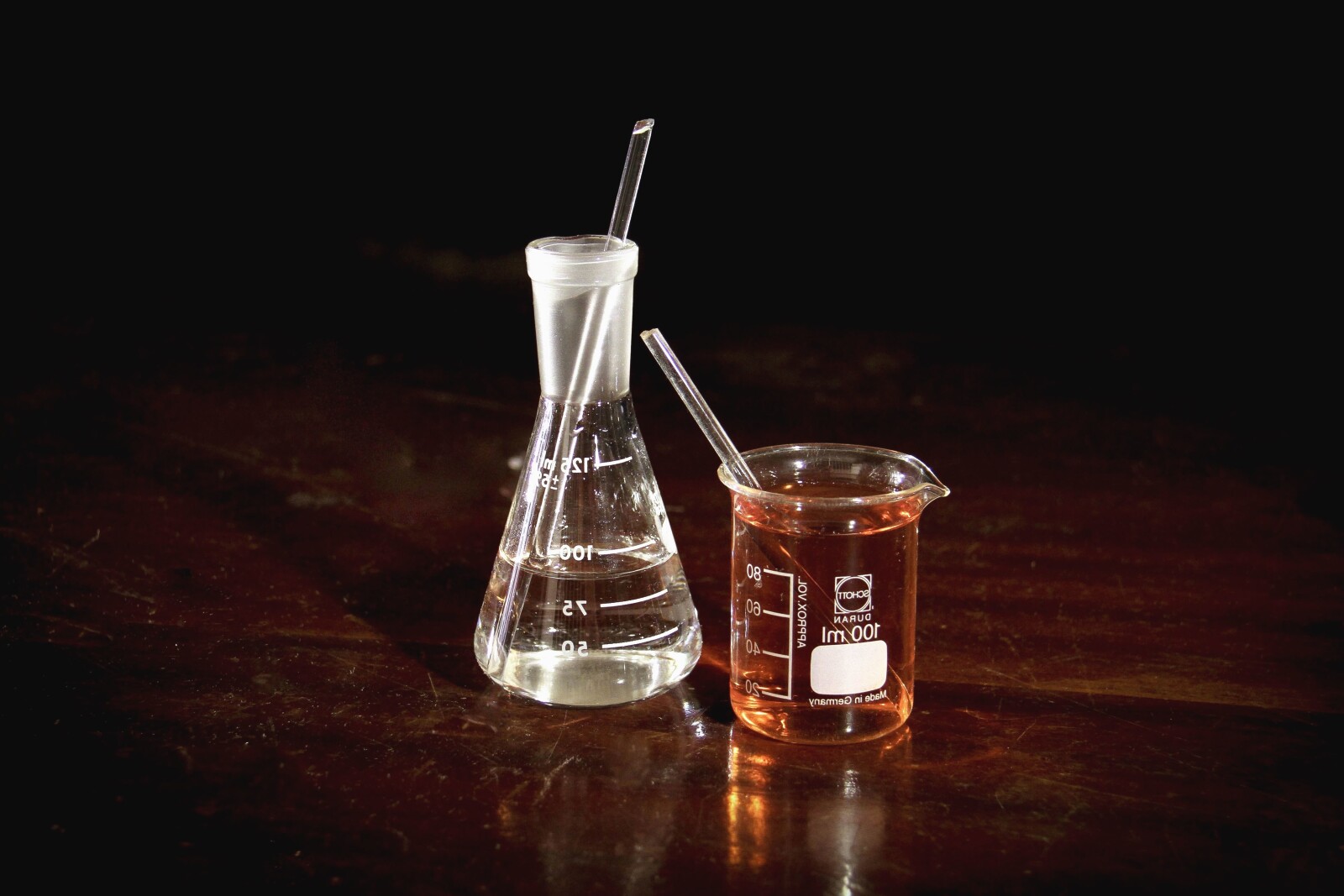Forever Chemicals on Trial: Decoding a Decade of Contaminated Waters and Corporate Accountability
In the comprehensive report "Forever Chemicals on Trial: Decoding a Decade of Contaminated Waters and Corporate Accountability," we delve into the intricate legal battles over the widespread contamination of water resources by per- and polyfluoroalkyl substances (PFAS). Over the past decade, a proliferation of litigation has brought to light the critical issues surrounding these enduring pollutants and the alleged negligence of corporations in mitigating their impact. The document meticulously traces the trajectory of class actions, state-driven lawsuits, and the proactive measures by water utilities, all seeking reparations and a reevaluation of industrial practices. This introduction sets the stage for a detailed examination of the legal frameworks, the responses from implicated companies, particularly 3M, and the evolving regulatory environment aimed at safeguarding public health and ensuring corporate accountability.

Key Takeaways
- Over 6,400 PFAS-related lawsuits have been filed since 2005, including class actions and state attorney general actions.
- Water utilities are taking legal action against manufacturers to recover costs incurred in dealing with PFAS-contaminated drinking water and to hold them accountable for polluting the water supply.
- 3M is facing significant litigation for its contribution to PFAS contamination, with allegations that the company knowingly polluted drinking water supplies.
- Bellwether trials are pivotal cases that could set precedents and potentially expose manufacturers to billions of dollars in liabilities.
PFAS Lawsuit Overview
In the realm of environmental law, PFAS-related lawsuits have surged as affected parties seek reparation for contaminated water supplies and corporate negligence. This escalating litigation reflects deepening concern over the proliferation of per- and polyfluoroalkyl substances (PFAS) in the environment. The PFAS lawsuit trends indicate a growing awareness of the risks associated with these chemicals, leading to an increase in legal action from affected communities, water utilities, and state attorneys general. These lawsuits aim to hold manufacturers like 3M accountable for their role in contaminating drinking water supplies. The impact on affected communities is profound, as they grapple with health fears and the financial burden of remediation. Legal battles, such as bellwether trials, will set precedents and influence future corporate conduct regarding environmental responsibility.
Class Action Dynamics
Amidst the surge of PFAS-related legal actions, class action lawsuits have become a pivotal mechanism for collective redress by communities facing contaminated water supplies. These legal proceedings enable numerous individuals, often with similar claims, to seek justice and compensation through a single lawsuit. The class action implications are far-reaching, as outcomes can set precedents that influence subsequent cases and regulatory reforms. Effective legal representation is critical in these complex disputes, as it ensures the interests of the affected class are properly advocated. Attorneys navigate intricate legal landscapes to attribute responsibility and secure remedies for harm suffered. These class actions are not just about recompense but also about compelling corporate accountability and catalyzing systemic change in environmental practices.
State Attorneys’ Involvement
While class action lawsuits enable individuals to collectively address PFAS contamination, state attorneys general have also played a crucial role by initiating legal action against corporations for damages to public health and the environment. The state attorneys' role extends beyond representing individual constituents to safeguarding broader public interests. They wield the authority to challenge corporate practices on a legal front, often catalyzing accountability for environmental stewardship. These legal implications are profound, as lawsuits by state attorneys can compel companies to adopt more sustainable practices and bear the financial burden of remediation efforts. Moreover, these actions have the potential to set legal precedents that influence corporate behaviors nationwide, underlining the significance of state attorneys in the fight against PFAS pollution.
Water Utilities’ Legal Actions
Frequently, water utilities across the nation have initiated legal proceedings against PFAS manufacturers to recoup the substantial costs of purifying contaminated water supplies and to demand accountability for environmental impacts. These utilities are seeking compensation for the financial burden they bear in filtering out the toxic substances to provide safe drinking water. The litigation emphasizes manufacturers' responsibility for the widespread contamination, as water providers argue that the companies should be liable for the expenses and damages resulting from their products. By pursuing these legal actions, water utilities aim not only for financial redress but also to incentivize the industry to adopt safer practices and contribute to preventing further pollution of vital water resources.
Seeking Corporate Accountability
In response to the financial and environmental toll of PFAS contamination, water utilities have increasingly pursued litigation to hold manufacturers legally accountable for their role in polluting water supplies. These lawsuits serve as a mechanism for demanding manufacturers' responsibility, seeking not only to recover the substantial costs associated with mitigating contamination but also to incentivize preventative measures. The legal battles, including those against 3M, have highlighted allegations of knowing contribution to water pollution, with the outcomes of bellwether trials poised to shape the future of corporate accountability in environmental matters. As these cases unfold, they underscore the necessity for manufacturers to prioritize environmental stewardship and align their practices with the growing demand for corporate responsibility in safeguarding public health and resources.
3M’s Legal Challenges
Consistently at the forefront of PFAS-related legal scrutiny, 3M now confronts a multitude of challenges as courts examine their alleged role in contaminating water supplies. Central to these proceedings is the determination of 3M's liability in the widespread presence of these persistent chemicals in the environment. Amidst the deluge of litigation, the company has marshaled a robust defense strategy, which notably includes invoking the government contractor defense—a move aimed at limiting their legal responsibility based on their compliance with federal directives. Despite the complexity of the suits, the outcome of these legal battles will be instrumental in shaping the responsibility of corporations in addressing contamination and safeguarding public health, as well as in setting precedents for future environmental litigation.
The Government Contractor Defense
Several manufacturers, including 3M, are employing the government contractor defense in PFAS-related lawsuits to potentially limit their liability for contamination. This legal strategy is grounded on the premise that contractors are not liable for consequences of actions taken while complying with government contracts. By invoking this defense, companies argue that they manufactured PFAS-containing products under the direction of the government, therefore, they should not be held fully accountable for the resultant environmental impact. The success of this defense could significantly influence the PFAS settlement program, potentially shaping the financial responsibilities and future actions of the involved corporations. As the legal proceedings unfold, the effectiveness of the government contractor defense remains under rigorous judicial scrutiny.
Bellwether Trial Significance
Amidst the legal fray over PFAS contamination, bellwether trials have emerged as crucial determinants of corporate responsibility and potential compensation for affected communities. The significance of bellwether trials in this context lies in their ability to set legal precedents and influence the outcome of subsequent cases. These trials test the waters, offering a glimpse into how juries may respond to complex scientific evidence and legal arguments concerning the impact of PFAS contamination on communities. The results shape litigation strategies and may accelerate settlements, guiding corporate accountability measures. As these cases proceed, they paint a clearer picture of the compensation that communities may expect for the extensive environmental and health damages they have suffered due to PFAS exposure.
Anaheim’s Legal Battle
The city of Anaheim has initiated a formidable legal challenge against major chemical manufacturers, seeking reparations for the pervasive PFAS contamination found in its water supply. Anaheim's legal strategy is firmly rooted in holding these corporations accountable for the environmental and health impacts on local communities. The litigation underscores the financial and social burden placed on residents, who rely on the city's water for their daily needs. By confronting the alleged negligence of these manufacturers, Anaheim aims to not only secure the funds required for remediation but also to catalyze a broader movement for corporate responsibility. The outcome of this legal battle could set a precedent, influencing the course of similar cases nationwide and reinforcing the critical need to protect public health from industrial pollutants.
Federal PFAS Funding
Recognizing the ubiquitous nature of PFAS contamination, the federal government has allocated approximately $10 billion to combat the issue, signaling a substantial commitment to both remediation and prevention efforts. This infusion of government funding is a critical step towards addressing the widespread presence of these harmful chemicals in drinking water supplies. To maximize the efficacy and reach of these funds, active industry collaboration is essential. The complexities of PFAS pollution require a concerted approach that combines federal resources with the technical expertise and innovative capabilities of private sector entities. Together, this alliance can expedite the development of effective cleanup strategies and foster the creation of safer chemical alternatives, thereby safeguarding public health and the environment from the pernicious effects of PFAS.
Nationwide Cleanup Costs
How will the nation grapple with the staggering estimated $200 to $400 billion cleanup costs required to fully eradicate PFAS from the United States' water supply? The figure not only demands urgent attention but also strategic planning to mitigate the environmental impact of these persistent chemicals. This nationwide cleanup costs assessment underscores the monumental task ahead. Federal allocations, while substantial, merely scratch the surface of the financial investment needed. As PFAS-related lawsuits proceed, there's potential for recouping some expenses through corporate accountability. However, the enormity of the issue warrants a multi-faceted approach, involving federal, state, and private sector cooperation. Prioritizing resources and technological innovation is crucial in addressing both the contamination and its pervasive environmental impact.
3M’s Manufacturing Cessation
Amidst the legal and environmental turmoil, 3M has committed to ceasing the production of PFAS by 2026, marking a significant shift in industry practices towards addressing the widespread contamination issues. This decision underscores 3M's commitment to environmental responsibility and public health. It also reflects an acknowledgment of the need for collaborative solutions involving both corporate and governmental entities to tackle the persistence of these chemicals in the environment. As 3M phases out PFAS, the spotlight turns to the development of safer alternatives and the role of innovative technologies in this transition. The move is poised to set a precedent for other manufacturers and to encourage a collective effort in mitigating the legacy of water contamination.
Non-PFAS Technological Breakthroughs
Innovative research has yielded promising non-PFAS alternatives that stand to revolutionize industry standards and environmental safety. As awareness of the severe health risks associated with PFAS compounds has grown, so too has the urgency to identify and deploy safer substitutes. These PFAS alternatives are emerging across various sectors, including manufacturing, firefighting foams, and consumer products, offering hope for significant health risks mitigation. The development and application of these alternatives signal a pivotal shift towards a more sustainable and responsible approach to industrial practices. As these technologies continue to mature, they are expected not only to diminish the future environmental footprint but also to safeguard public health by reducing exposure to toxic substances.
AFFF Alternative Developments
Recent advancements have catalyzed the development of non-PFAS alternatives to Aqueous Film Forming Foam (AFFF), marking a significant step forward in reducing environmental contamination and health risks. These non-PFAS foam alternatives are emerging as pivotal players in reshaping the future of AFFF firefighting foam. By mitigating the pervasive issue of PFAS contamination, these alternatives are setting new benchmarks for safety and ecological responsibility in fire suppression technologies. Their introduction addresses the critical need for effective firefighting solutions that do not compromise the integrity of ecosystems or public health. The progress in this area is a testament to the concerted efforts of scientists and environmental advocates, ensuring a more sustainable and responsible approach to managing fire-related hazards.
Legal Support for Utilities
Following the development of non-PFAS firefighting foams, public water utilities have increasingly sought legal support to navigate the complex landscape of PFAS litigation and secure compensation for contamination cleanup efforts. These entities require skilled legal representation to confront industrial giants accused of tainting vital water supplies with PFAS chemicals. The litigation process often begins with a comprehensive eligibility assessment to determine the utility's standing to claim damages. This step is crucial as it lays the groundwork for a successful lawsuit, ensuring that affected utilities can demonstrate a direct link between the contaminant manufacturers and the pollution in their water systems. Through robust legal strategies, utilities aim to hold manufacturers accountable and alleviate the financial burden of mitigating PFAS contamination.

This post has been generated by AI and was not reviewed by editors. This is Not legal advice. Please consult with an attorney.




